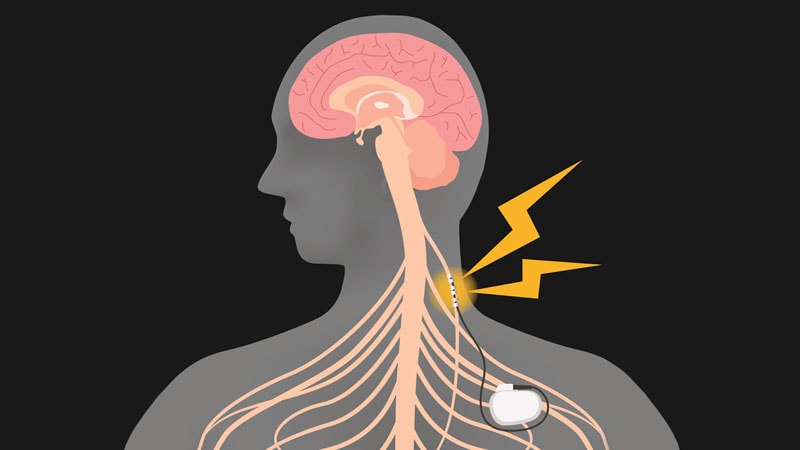Transcranial VNS Tied to Improved Cognition in PTSD
TOPLINE:
Transcutaneous cervical vagus nerve stimulation (tcVNS) improves attention and working memory in patients with post-traumatic stress disorder (PTSD), which may improve quality of life and productivity.
METHODOLOGY:
Many patients with PTSD, a syndrome characterized by hyperarousal, avoidance, re-experiencing symptoms, and deficits in concentration and memory, have limited or no response to available treatments.
Vagus nerve stimulation (VNS) is approved by the US Food and Drug Administration for the treatment of epilepsy and treatment-refractory depression with new-generation hand-held stimulation devices that are currently available.
The double-blind study included 15 patients with PTSD (10 men and 5 women), mean age 40.4 years, who were randomized to self-administer active or sham VNS stimulation twice daily for 3 months.
During stimulation participants completed short-term declarative memory tasks including paragraph encoding followed by recall and N-back tests.
TAKEAWAY:
There was a significant improvement in paragraph recall performance following pairing with paragraph encoding in the active stimulation group at 2 months (P < .05), with no such trend in the sham group.
Active stimulation resulted in a 91% increase in paragraph recall performance within the group (P = .03), whereas the sham group exhibited no such improvement.
N-back test results suggested a pattern of better performance in the active group compared with the sham group.
IN PRACTICE:
“This longitudinal study shows benefit for cognitive symptoms associated with PTSD and suggests that tcVNS may improve work and social functioning for patients with PTSD,” the investigators write.
SOURCE:
The study was conducted by Tilendra Choudhary, Department of Psychiatry & Behavioral Sciences, Emory University School of Medicine, Atlanta, and colleagues. It was published online July 12 in the Journal of Affective Disorders.
LIMITATIONS:
The sample size was small and assessments were missing at some time points. Although the active and sham devices were designed to deliver a similar sensation of stimulation, researchers didn’t collect data on participants’ perception of whether they were receiving active or sham treatment.
DISCLOSURES:
The study received support from the Department of Defense and National Institutes of Health. Author J. Douglas Bremner, MD, is on the scientific advisory board for Evren Technologies and previously received research funding from electroCore, which provided both the active and sham stimulation devices used in this study.
For more news, follow Medscape on Facebook, Twitter, Instagram, YouTube, and LinkedIn.
Source: Read Full Article
